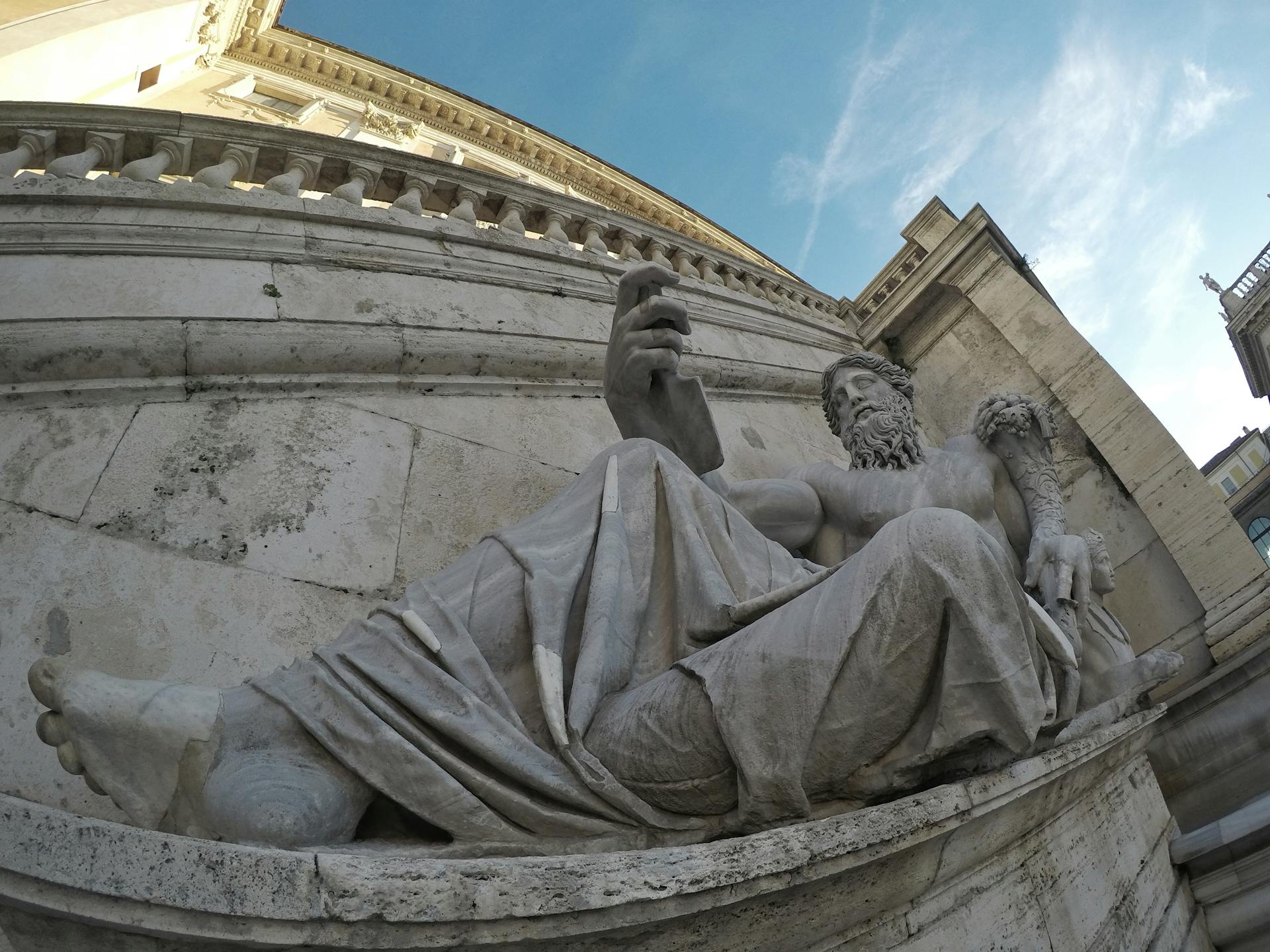
The Xoloitzcuintli, also known as the Mexican Hairless Dog, has a rich history that dates back over 3,000 years to the ancient Mayan and Aztec civilizations.
In these cultures, the Xoloitzcuintli was revered as a sacred animal, often buried with its owners to provide companionship in the afterlife.
The Xoloitzcuintli's unique appearance, with its sleek, wrinkled skin and large, bat-like ears, was seen as a symbol of its spiritual significance.
According to legend, the Xoloitzcuintli was a gift from the gods, sent to earth to guide and protect humans.
Xoloitzcuintli History
The Xoloitzcuintli has a rich history dating back over 3,000 years.
Ceramic sculptures depicting a hairless breed of dog have been unearthed in burial sites across ancient West Mexico, representing the Xoloitzcuintli.
The breed was considered sacred by the Aztecs and other Mesoamerican cultures, believed to possess special healing and protective powers.
They were thought to safeguard homes from evil spirits and diseases, and their warmth was believed to alleviate ailments such as arthritis and rheumatism.
On a similar theme: Xoloitzcuintli Breed Standard
Xoloitzcuintlis were used in traditional healing practices, and owning one was a symbol of wealth and social status among the ancient Aztecs.
These dogs were often depicted in artwork and frequently given as gifts to nobility and important figures.
The Xoloitzcuintli managed to survive through the centuries, and in the 20th century, efforts were made to revive and preserve the breed.
Dogs in Ancient Times
In ancient times, dogs like the Xoloitzcuintli held significant spiritual importance. They were often sacrificed and buried alongside their owners, believed to act as guides for the soul on its journey to the underworld.
The Xoloitzcuintli was considered sacred by the Aztecs and other Mesoamerican cultures. They believed the dogs could safeguard homes from evil spirits and diseases.
The Aztecs thought that dogs like the Xoloitzcuintli possessed special healing and protective powers. They used the dogs in traditional healing practices, believing their warmth could alleviate ailments like arthritis and rheumatism.
Xoloitzcuintlis were also used to treat certain skin conditions. Their unique appearance and spiritual significance made them a common subject in religious ceremonies and rituals.
Owning a Xoloitzcuintli was a symbol of wealth and social status among the ancient Aztecs. They were often depicted in artwork and frequently given as gifts to nobility and important figures.
The Xoloitzcuintli's association with the Aztec god of fire, Xolo, reflects its sacred status in Aztec mythology.
Suggestion: Xoloitzcuintli Aztec Art
The Xoloitzcuintli Legend
The Xoloitzcuintli's name is a testament to its rich history, combining the word "Xolo", referring to the Aztec god of fire, with "itzcuintli", meaning "dog". This name reflects the breed's sacred status and its association with divine elements in Aztec mythology.
In Aztec mythology, the Xoloitzcuintli was believed to possess special healing and protective powers, thought to safeguard homes from evil spirits and diseases. The Aztecs thought that dogs could safeguard homes from evil spirits and diseases.
The Xoloitzcuintli was considered a symbol of wealth and social status among the ancient Aztecs, often depicted in artwork and given as gifts to nobility and important figures. Xoloitzcuintlis were frequently depicted in Mesoamerican art, including sculptures, paintings, and pottery.
The Xoloitzcuintli held significant spiritual importance, believed to act as guides for the soul on its journey to the underworld. They were often sacrificed and buried alongside their owners, believed to act as guides for the soul on its journey to the underworld.
The Xoloitzcuintli's unique appearance and spiritual significance made it a common subject in religious ceremonies and rituals. In the 20th century, efforts were made to revive and preserve the breed.
Xolotl and the Xoloitzcuintli
The Xoloitzcuintli is named after the Mexica God Xolotl, which welds two Nahuatl words: itzcuintli, meaning dog, and Xolotl.
Xolotl was a significant figure in pre-Hispanic society, believed to lead the dead to Mictlán, or the Underworld, and to be the twin brother of Quetzalcoatl, the creator of life.
The Xoloitzcuintli was considered a sacred animal, often buried with the dead to ensure a safe journey to the afterlife, or replaced with a small wooden or ceramic statue if a dog couldn't be sacrificed.
In pre-Columbian society, Xolotl's role was multifaceted, including guiding the sun through the underworld during twilight so it could return safely the next day.
Xoloitzcuintli Evolution
The Xoloitzcuintli Evolution is a fascinating topic. The breed is believed to have originated in Mexico over 3,000 years ago.
As an ancient breed, the Xoloitzcuintli has undergone significant changes over time, with evidence of its evolution found in ancient artifacts and artwork. The breed was highly valued by the Aztecs and Mayans.
The Xoloitzcuintli's unique appearance, with its sleek body and short coat, is a result of its adaptation to the hot and dry climate of Mexico. Its short coat allows it to conserve heat and water.
The breed's size has also varied over time, with some ancient depictions showing larger Xoloitzcuintlis than those found today. However, the breed's overall body shape and proportions have remained relatively consistent.
The Xoloitzcuintli's evolution is a testament to its ability to thrive in a variety of environments and its adaptability to changing circumstances.
Discover more: Xoloitzcuintli Ugliest Dog Breed
Sources
- https://www.americanindianmagazine.org/story/Xoloitzcuintli-the-Hairless-Dog
- https://www.nationalgeographic.com/history/article/hairless-dog-mexico-xolo-xoloitzcuintli-Aztec
- https://mexicanroutes.com/xoloitzcuintli-the-ancient-mexican-hairless-dog/
- https://www.ancientartpodcast.org/blog/61/
- https://mexiconewsdaily.com/culture/how-much-do-you-know-about-the-xolo-the-mexican-hairless-dog/
Featured Images: pexels.com


